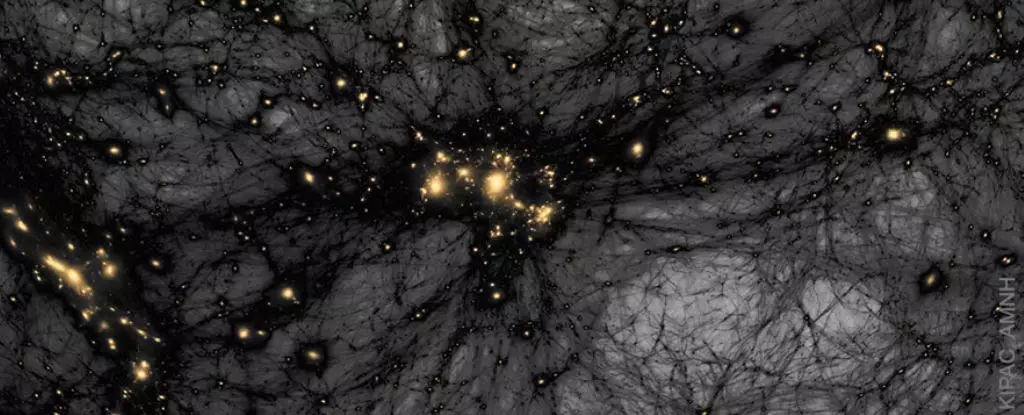The cosmos has always been a source of intrigue and perplexity for scientists and philosophers alike. Among these mysteries, one of the most pressing conundrums in the realm of cosmology is the infamous Hubble tension problem. This discrepancy reveals a divergence between the rates of the universe’s expansion observed locally and those inferred from the early universe. Such a compelling paradox has prompted cosmologists to reconsider fundamental aspects of physical laws and the constructs that underpin our understanding of the universe. The implications are staggering: could the very fabric of reality be different than we have been led to believe?
As we hunt for explanations, the palette of proposed theories grows ever wider. From the potential failures of general relativity to the radical re-evaluations of dark matter’s existence, the search for understanding is far from homogenous. What is particularly fascinating is the introduction of evolving dark matter as a serious contender in this cosmic puzzle. This concept posits that dark matter—long presumed to be a static entity—might actually possess properties that change over time.
Questioning Established Norms
The notion that dark matter could evolve is not only refreshing; it challenges the conventional dialogue surrounding the enigmatic substance. Dark matter, which is thought to make up about a quarter of the universe, has generally been accepted on the grounds of indirect evidence, such as gravitational effects observed in galaxy rotations and cosmic microwave background radiation. Yet direct observation of dark matter particles remains elusive, leaving room for speculation and debate.
The opposition to dark matter itself has become a popular stance within scientific quarters, often leading to the development of modified gravity theories. The prevalent thinking has been to wrestle with dark matter’s existence rather than entertain the possibility of its evolution. Hence, the introduction of a dynamic model opens up an avenue of discussion previously brushed aside, inviting a re-examination of the physical laws that govern the universe.
The Potential of Oscillatory Dark Matter
The authors of recent studies suggest that instead of dismissing dark matter altogether, we should consider a version of it that is dynamic and potentially oscillatory. This idea pivots on the observation that certain particles—specifically neutrinos—display mass oscillations yet remain minimally interactive with visible light. This aspect leads us to contemplate a thrilling possibility: what if a fraction of cold dark matter also experiences such oscillatory behavior?
Recent models indicate that around 15% of cold dark matter could display these oscillatory characteristics, while the remaining 85% would adhere to our standard understanding of dark matter. This hypothesis intriguingly aligns itself with observational data, maintaining the universe’s coherence while simultaneously offering a new explanation for the Hubble tension. That a simple alteration in the behavior of dark matter particles could resolve a significant cosmological issue is both remarkable and humbling.
Uncharted Territories in Cosmology
It is imperative to emphasize that the prospect of evolving dark matter is still very much in its infancy. Current models remain tentative and serve primarily as theoretical constructs rather than definitive conclusions. As scientists probe further into the nature of dark matter, the conversations surrounding its evolutionary potential could pave the way for a wealth of new research avenues.
While this emerging idea holds promise, any serious exploration will necessitate rigorous scrutiny and validation against existing observational frameworks. There is, indeed, a thin line between revolutionary theories and mere speculation. The quest for an evolved dark matter model beckons—an enticing blend of imagination and scientific method that stands to reshape our cosmological landscape, challenging us to rethink what we thought we knew.
Emerging hypotheses like evolving dark matter signify a maturation in our approach to cosmological inquiry. By engaging with alternative perspectives, we empower ourselves to navigate the cosmos with a renewed sense of curiosity and critical thought. As we stand on the precipice of discovery, it becomes increasingly clear that the more we learn about the universe, the more questions we uncover, each leading us deeper into the allure of scientific exploration and the mysteries of existence.

